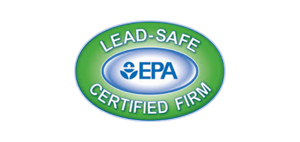Did you know that about 30% of homeowners face at least one water leak issue every year? Laminate flooring is popular for its cost and durability. But, it’s very sensitive to water damage. A single leak can cause warping, swelling, and even mold on your floor.
Knowing how to fix water damage on a floor is key. It’s not just about cleaning up spills. It involves careful steps and sometimes, help from water damage experts. Quick action is crucial to avoid bigger and more expensive problems later.
Key Takeaways
- About 30% of homeowners report at least one water leak issue annually.
- Laminate flooring is particularly vulnerable to water damage, requiring immediate action.
- Floor water damage can lead to warping, swelling, and mold growth if not addressed promptly.
- Effective measures include water removal, thorough drying, and professional assessment for severe cases.
- Prompt intervention can prevent costly repairs and ensure the longevity of your flooring.
Signs of Water Damage on Floors
Spotting water damage on floors is vital for quick action and effective cleanup. Different floors show different signs when they get too wet. For example, wood floors might warp if they get too moist. This happens when the moisture level goes above 5-10%.
Fixing water-damaged floors works best when you catch the problem early.
Wood floors can also cup, meaning the edges get higher than the middle. This usually happens when the floor stays wet for a long time. Finding these signs early can stop more damage and keep the floor safe.
- Gapping: Noticeable separations between planks in vinyl flooring due to weakened adhesive from water exposure.
- Discoloration: Yellowish stains or dark spots from moisture retention in vinyl flooring, and dark spots on wood due to mineral content.
- Bubbling: Trapped water in vinyl flooring can cause surface bubbling, which might linger even after drying.
Tile floors show water damage by tiles that loosen and damp grout lines. Mold spots, which are black, gray, or white, are a serious sign that needs quick action.
Concrete floors might peel paint or crack because of trapped moisture. Carpeted areas can wrinkle and feel damp, showing hidden water damage. This needs careful cleanup to stop mold.
Fixing water-damaged floors starts with a pro checking the damage with moisture meters. The fix can be simple repairs or replacing the floor, especially if it’s been flooded with sewage. Getting help fast is key to saving your floors and avoiding bigger problems.
Initial Steps to Address Water Damage
Quick action when dealing with water damage can save a lot of money and prevent bigger problems. The first thing to do is find and stop the water source. This could be a burst pipe, a broken appliance, or too much rain. It’s important to act fast, especially in older homes that might leak more easily.
Then, get rid of any water that’s standing. You can use wet/dry vacuums, submersible pumps, or even just mops and buckets. This step is key to preventing more water damage on your floors.
After removing the extra water, start drying things out right away. Use fans and dehumidifiers to help air move and dry things faster. In places where it’s humid and rains a lot, this is even more important to stop mold and damage.
Use moisture meters to check if everything is dry. This is important to make sure there’s no hidden moisture that could cause mold or damage. Also, look under carpets or tiles for water damage that you can’t see. This can help prevent rot, which is expensive to fix.
Finally, check the floor, walls, and ceiling for any hidden damage. If you ignore water damage, it can get worse and cost more to fix. Taking care of these first steps can save you money and keep your home safe.
How to Remove Water Damage from a Floor?
To fix a water damaged floor, start by checking how bad it is. Look for signs like warping or color changes. It’s important to act fast because mold can start growing in just 24 to 48 hours if the floor stays wet.
First, remove any wet items and debris. Then, use special drying tools like dehumidifiers and fans to dry the floor. This might take three to five days, depending on how wet it is and the drying methods used. Quick drying can save up to 50% on repair costs, studies show.
After drying, treat the floor with agents to stop mold and mildew. Hardwood floors might need sanding or refinishing to look good again. Repairing water-damaged hardwood floors can cost between $1,000 to $3,000, depending on the damage. If the damage is too bad, you might need to replace the floorboards.
For serious water damage, especially with black water, you might need to replace the flooring. Quick and professional help is key. Experts say they can save 90% of hardwood floors if they start work within 48 hours. They use tools like moisture meters and thermal imaging to dry the floor properly.
After fixing the floor, it can take three to six months for the floor to fully dry. Keep an eye on it, especially since different woods dry at different rates. Regular checks and maintenance can lower the chance of future damage by up to 30%.
Conclusion
Dealing with water damage on your floors is more than just spotting the problem early. It’s also about using the best ways to fix it. Hardwood floors, for example, can get damaged by leaks, broken pipes, or overflowing toilets. It’s key to act fast to avoid serious issues like cupping, which might mean you need to replace the whole floor.
Mold can grow in just 24 to 48 hours after water gets in. This shows how urgent it is to dry things out quickly.
Getting help from floor water damage experts is very helpful. They know how to fix water damage well. They can get to your place in an hour and use special tools to dry out your floors.
Using top-notch dehumidifiers is important. They help lower moisture levels and need to run all the time for at least 24 hours. Checking moisture levels daily is also key. It can take from 24 hours to weeks for floors to dry, depending on the damage.
Keeping up with maintenance, like checking your plumbing and using area rugs, can stop problems before they start. By fixing water damage fast and using the right methods, you can keep your floors looking good for a long time.

























